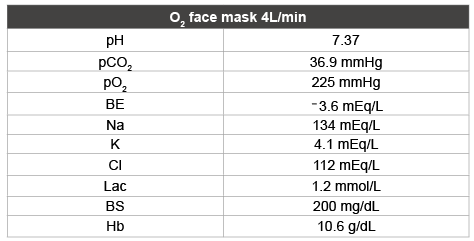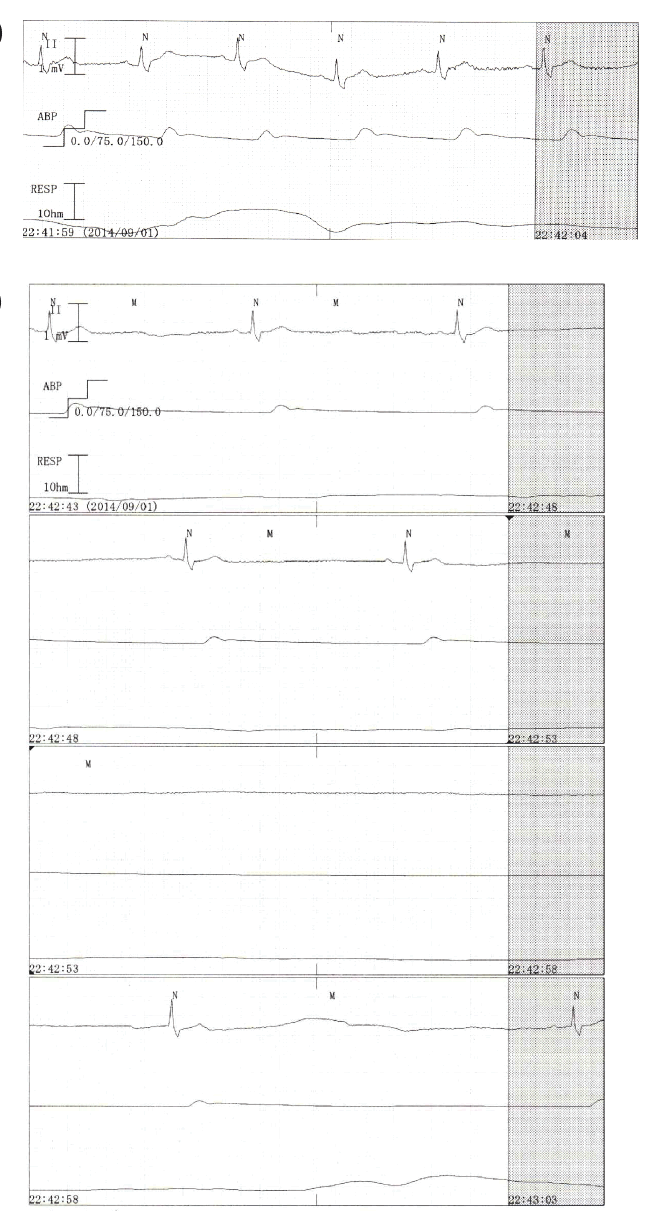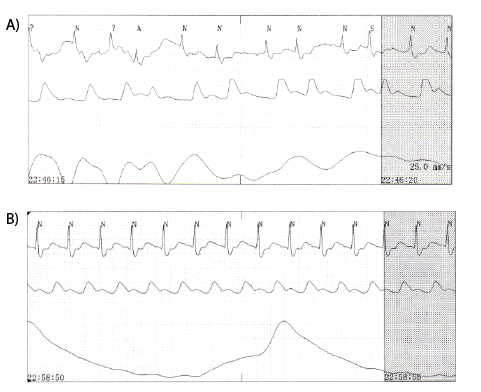
Table 1: Blood gas analysis at the time of octreotide injection

Masaru Tobe1* Masafumi Kanamoto1 Kenichiro Araki2 Ngatsé-Oko A1 Hiroshi Hinohara1 Shigeru Saito1
1Department of Intensive care medicine, Gunma University Hospital, Maebashi, Japan*Corresponding author:Masaru Tobe, Department of Intensive care medicine, Gunma University Hospital, Maebashi, Japan, Tel: 81-27-220-8698; Fax: 81-27-220-8692; E-mail: to-be@f3.dion.ne.jp
Article Type: Case Report
Citation: Tobe M, Kanamoto M, Araki K, Hinohara H, Saito S (2016) Octreotide-Induced Asystolic Events in a Patient after Pancreatoduodenectomy. J Clin Anesth Manag 1(2): doi http://dx.doi. org/10.16966/2470-9956.108
Copyright: © 2016 Tobe M, et al. This is an open-access article distributed under the terms of the Creative Commons Attribution License, which permits unrestricted use, distribution, and reproduction in any medium, provided the original author and source are credited.
Publication history:
Octreotide, a somatostatin analog, has been used after pancreatic surgery to reduce complications. We report a case of a patient who experienced an asystolic event because of a subcutaneous octreotide injection, post pancreatoduodenectomy. Although octreotide leading to bradycardia and heart block has been documented in several reports, an octreotide induced asystole case is very rare. To our knowledge, this is the first case of subcutaneously injected octreotide leading to asystole.
Octreotide; Pancreatoduodenectomy; Asystole; Postoperative care
Somatostatin was originally identified as a growth hormone release inhibiting hormone. Somatstatin and its analogs inhibit pancreatic exocrine secretions [1] by decreasing the volume of pancreatic secretion, the incidence of pancreatic leak or fistula decreases. Considering that pancreatic fistulas can be life-threatening a decrease in clinically significant pancreatic fistula might decrease perioperative mortality, morbidity and the length of postoperative hospital stays [2]. Some doctors advocate somatostatinis used as a prophylactic measure [3]. However, the use of somatostatin and its analogs during pancreatic surgery is controversial. Somatostatin’s use may potentially decrease morbidity and mortality following pancreatic surgery but it may have no therapeutic benefit and may even be associated with negative outcomes. In several case reports [4,5], bradycardia and heart block were reported as sideeffects of octreotide administration. In the following case, we describe a patient who experienced an asystolic event after a subcutaneous octreotide injection while being treated in the intensive care unit (ICU).
A 79-year-old male patient with liver dysfunction was referred to our surgery. He had hypertension and had previously undergone heart surgery. Three years ago, he underwent an aortic root replacement (arranged Bentall procedure) for an aortic valve regurgitation and ascending aorta to aortic arch aneurysm. However, he had experienced no difficulty in daily activities since surgery and a follow-up echocardiogram was uneventful. He was eventually hospitalized and underwent close monitoring for liver dysfunction. He was subsequently scheduled for a pylorus-preserving pancreatoduodenectomy (PpPD) after a diagnosis of extra hepatic bile duct cancer.
After hospitalization, he was firstly treated for cholangitis by endoscopic nasobiliary drainage. He underwent a preoperative examination, chest and abdominal X-rays, an electrocardiogram, a blood test, and echocardiography. An anesthesiologist also consulted with the patient in a pre-anesthetic examination.
A PpPD and reconstruction (arranged Child method) were performed under epidural analgesia and general anesthesia. Because of a lot of adhesive tissue due to inflammation, the operation was 9 h and 24 min long. With a blood loss of 1883 mL, the patient was transfused with 840 mL of a red blood cell product. The operation was uneventful, and the patient was extubated in the operating room and left in the intensive care unit for postoperative management.
The patient was admitted to the ICU at 19:35. He was monitored by ECG, and for SpO2 and radial artery blood pressure. He received 4 L/min oxygen, epidural local anesthetic infusion and extracellular fluid infusion. At 22:00, his vital signs were almost normal, heart rate 87 bpm sinus rhythm, arterial blood pressure 133/68 mmHg, SpO2 100%, and respiratory rate 18/min. Blood gas analysis at 22:00 was normal (Table 1). Octreotide acetate (100 µg; Sandstatin®) was injected subcutaneously at 22:00. On 22:43, gradual bradycardia became evident, and the patient’s heart eventually became asystolic (Figure 1). A nurse commenced immediate cardiac compressions, and an ICU doctor injected 1mg of adrenalin without delay. Two minutes afterward, his heart beat was restored (Figure 2). He was intubated and sedated until the next morning, with further arrhysmias not noted during the night.

Table 1: Blood gas analysis at the time of octreotide injection

Figure 1: Changes in the ECG 40 min after a subcutaneous octreotide injection: bradycardia to asystole. A. An ECG just prior to bradycardia. 22:41:59~22:42:04. B. An ECG showing a change from sinus bradycardia to asystole. 22:42:43~22:43:03.

Figure 2: A. An ECG after the patient’s heartbeat was restored. Atrial fibrillation rhythm. 22:46:15~22:46:20. B. An ECG 10 min after the patient’s heartbeat was restored. Sinus rhythm. 22:58:50~2258:55
The next morning, the patient was conscious and extubated. Creatinine kinase and troponin levels were not elevated, and there were no bradycardias and arrhysmias thereafter. Echocardiography performed after the asystolic episode did not detect any changes.
We experienced the case post PpPD patient fell into sudden asystole. The cause of sudden asytole is generally acute myocardial infarction, vagal reflex, pulmonary embolism, hypoxia, and electrolyte imbalance. In this case, it was hard to consider this cause of asystole when referring to blood gas analysis and laboratory data. Because we could not detect another factor of asystole, we concluded octreotide induced asystole. There were several reports of octreotide induced bradycardia and asystole. But the mechanism of asystole affected by octreotide is not clear. The use of somatostatin and its analogs during pancreatic surgery is controversial. We should not use octreotide to avoid asystole, we should monitor the ECG strictly when using octreotide. We should be careful about such use of somatostatin and its analogs very much.
We experienced the case considered octreotide administration to be a factor in a case of sudden a systole. There are several reports of octreotideinduced bradycardia and a systole, but this is the first report of an asystole after subcutaneous injection of octreotide induced.
We had a statement on consent to report under the ‘Ethics, consent and permissions’.
The authors declare that they have no competing interests.
Download Provisional pdf here
All Sci Forschen Journals are Open Access